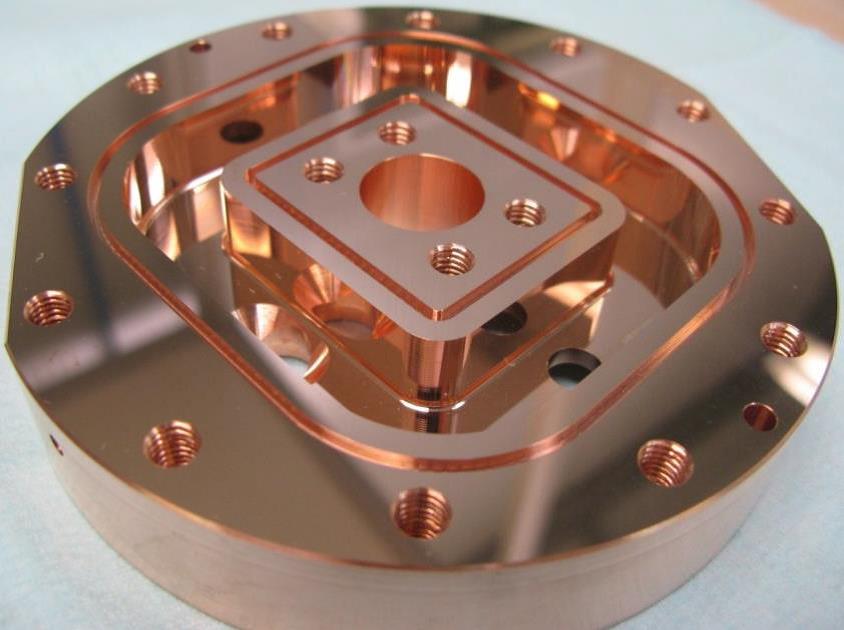Continuous atomic fountain clock
Key members:
- Prof. Thomas Südmeyer ([email protected])
- Dr Michael Petersen ([email protected])
- Antoine Jallageas ([email protected])
The unit of time of the international system of units (SI), the second, is defined from a specific internal energy transition in an isolated atom of 133Cs (transition between the two hyperfine levels of the fundamental state). In practice, it is obtained from the measurement of the microwave radiation frequency corresponding to the energy difference between the two levels of the transition undergone by the Cs atom. This frequency is then easily converted to a time unit since its value is 9’192’631’770 Hz by definition. An instrument or an experiment set-up that realizes this measurement is a primary frequency standard or primary atomic clock. The most precise Cs atomic clocks in the world can measure the frequency of this atomic transition with more than 15 digits of precision. This amount of precision on the measurement of time or frequency is needed for instance for fundamental research or in astronomy. Atomic clocks are also used for the realization of national and international time standards (Coordinated Universal Time–UTC).
The most precise primary frequency standards are cesium fountain clocks. They are based on the principle of laser-cooling of Cs atoms down to a few µK in a vacuum chamber to minimize Doppler-induced broadening of the transition, which results in a much more precise determination of the transition frequency.
The actual frequency measurement is done while the atoms are following a parabolic trajectory through the measurement system when launched upwards (hence the name fountain clock), as a result of gravity. Usually, this makes the atomic clock inherently pulsed (first the atoms are gathered and cooled down, then they are launched upwards and a measurement of the transition frequency is done before the atoms are lost). The LTF has built a unique fountain clock in cooperation with the Swiss Federal Institute of Metrology (METAS) in Bern, which is measuring continuously on a stream of cooled atoms instead of on small clouds of cooled atoms. In this way, the atomic clock FOCS-2 (FOntaine Continue Suisse = Swiss Continuous Fountain) is continuously measuring the frequency, which significantly improves the clock signal-to-noise ratio. Furthermore, the operation of this fountain significantly differs from the pulsed versions, so that it provides an independent verification of the Cs transition frequency. The main goals of the first Swiss primary frequency standard would be to participate in the realization of the international atomic time standard (TAI) and be part of the ground station system for the 2016 ACES (Atomic Clock Ensemble in Space) mission in which a primary atomic clock will be operated in the international space station and will be compared with atomic clocks on Earth.
However, reaching a level of precision corresponding to better than 15 digits requires a full understanding of the atomic trajectory and the effects that can perturb the clock frequency. This corresponds for example to a control of the magnetic field in the vacuum chamber to better than 1 mG and less than 10-16 W of residual microwave radiation in critical parts of the clock vacuum chamber where microwave radiation is unwanted. The microwave radiation required for the measurement of the clock frequency interacts with the atoms in a copper cavity, which the atoms pass through. The cavity has been carefully designed such that the phase of the microwave radiation varies by less than 1.5•105 radian across the atomic beam passing through the cavity.

- G. Di Domenico, L. Devenoges, C. Dumas, P. Thomann, Combined quantum state preparation and laser cooling of a continuous beam of cold atoms, Phys. Rev. A 82, 053417 (2010) PDF
- G. Di Domenico, L. Devenoges, A. Stefanov, A. Joyet, P. Thomann, Fourier analysis of Ramsey fringes observed in a continuous atomic fountain for in situ magnetometry, Eur. Phys. J. Appl. Phys. 56, 11001 (2011) PDF
- L. Devenoges, A. Stefanov, A. Joyet, P. Thomann, G. Di Domenico, Improvement of the frequency stability below the Dick limit with a continuous atomic fountain clock, IEEE Trans. on UFFC 59 (2), 211-216, (2012) PDF

